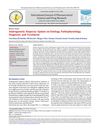Androgenetic Alopecia: A Review and Emerging Treatments
July 2017
in “
Clinical research in dermatology
”

TLDR Hair loss, known as Androgenetic Alopecia, is often caused by hormones and can be diagnosed using noninvasive techniques. Treatments include topical minoxidil and oral finasteride, with new treatments being explored. There may also be a link between this type of hair loss and heart disease risk.
The 2017 document "Androgenetic Alopecia: a Review and Emerging Treatments" discussed Androgenetic Alopecia (AGA), a common form of hair loss that leads to hair follicle miniaturization. The document highlighted the role of hormones, particularly DHT, in AGA development. Diagnosis was typically based on clinical history and examination, with noninvasive techniques like trichoscopy and the hair pull test aiding in diagnosis. The FDA-approved treatments at the time were topical minoxidil and oral finasteride. Minoxidil was effective and well-tolerated in both men and women, promoting hair regrowth through various effects. Finasteride was effective in men but not in women. Dutasteride appeared safe and effective in AGA treatment. Antiandrogens were used in female pattern hair loss treatment, but their efficacy was limited. Emerging treatments like topical finasteride and Low-Level Laser Therapy were being investigated. The document also noted a potential link between AGA and cardiovascular risk factors.




